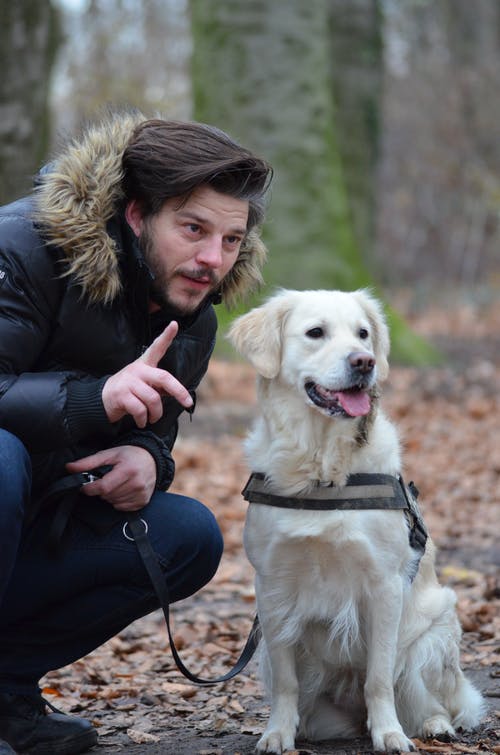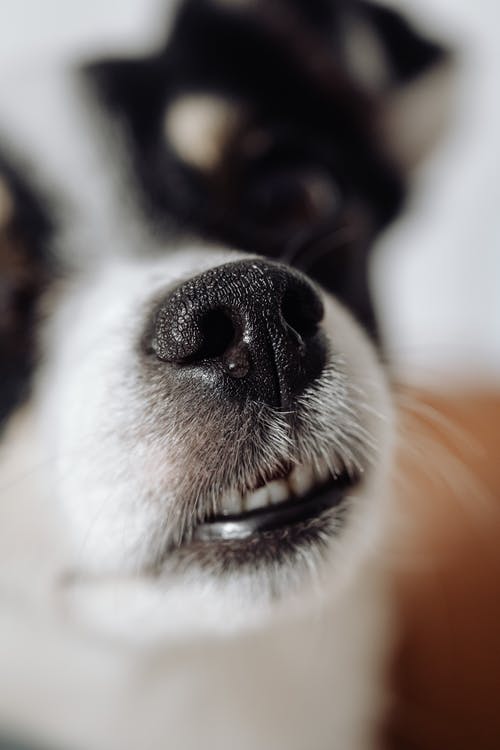Archive for September, 2022
-
Top Dog Training Collars
Training your dog is essential for many reasons and is something that all dog owners need to focus on, beginning when their dog is a puppy. A properly trained dog will be easier to live with and will help keep him and your family safe. Positive reinforcement training techniques tend to yield the best long-term results, and one of the tools many dog owners rely on is training collars. Training collars can assist in getting your dog comfortable with the feeling of wearing a collar and help gently correct habits and/or improper behavior. The question many dog owners ask is, what type of collar will my dog do best with?
What Types of Collars Are There?
Standard Dog Collar: A standard dog collar, also known as a buckle collar, is one of the most common types of training collars used. These collars are used on dogs of all shapes and sizes and are easy to put on and adjust. Although they are not as corrective as other dog collars, they are easily deployed and will prevent your dog from feeling choked while they are using them to walk with you.
Choke Collar: A choke collar is a very common training collar used to catch your dog’s attention when they are initially learning how to walk on a leash. This type of collar is designed to tighten when your dog pulls on the lead, which will cause a degree of discomfort until they stop pulling. After a few walks with this collar, your pup will learn to walk with you, not away from you.
Martingale Collar: A martingale collar is considered a choke collar; however, much more of a gentle one. These collars are basically a combination of a buckle collar and slip lead, as they have a second loop on the collar that will tighten as a dog pulls. The loop, however, will only allow the collar to tighten slightly, so it will not apply the same pressure on your dog as a routine choke collar or slip lead. The tightness applied to their neck is generally enough to gain their attention and compliance.
Prong Collar: A prong collar is used to control dogs that have a greater physical force and or pull. Generally, this type of collar is used on dogs who continue to pull or run and ignore the effects of a standard or choke collar. A prong collar consists of metal links that face inward on the collar, coming in contact with your dog’s neck. When the dog pulls or runs, pressure is applied by these prongs, which will move close together, creating a pinch around the dog’s neck. The pinch is generally enough to catch your dog’s attention and slow down or stop his excessive pulling. It should be noted that these collars should only be used by those who have experience using them. They are recommended only after other basic collars have proven ineffective.
Shock Collar: A shock collar is a training collar that delivers a light shock or vibration to the dog’s neck when the owner activates it. These collars come with a small wireless remote control that the owner holds, allowing them to send a signal to the collar when the dog is acting inappropriately. The goal behind this type of collar is to teach your dog that a certain behavior will result in an annoying and or uncomfortable sensation. If you are trying to teach your dog not to run after people, and when he does, he feels this uncomfortable sensation, he will correlate the behavior to it. In time the dog will typically stop the undesired behavior without even receiving the sensation.

A Collar Is Just a Tool
Dog owners need to remember that a training collar is just a tool they have in helping to train their dogs. Proper dog training takes time and effort. In many instances, we are trying to teach our dogs certain things that are against their own instincts. Dogs naturally like to chase things and run free. Although collars, when utilized correctly, will help to train a dog, consistent positive reinforcement is very important. Some dog breeds tend to train more quickly than others and will require less strenuous training. Being patient, caring, and remembering that this takes time will help make the training process easier for you and your dog.
-
Your Dog’s Amazing Nose
No matter what breed of dog you have, there is one common quality they all share. Their incredible sense of smell! Their ability to pick up on even the faintest scents has allowed for their survival for hundreds if not thousands of years. It has also allowed them to be utilized to assist humankind in tracking and retrieving game, locating missing people, detecting diseases in people, and finding illegal substances, such as narcotics.
How Sensitive Is Their Nose?
Animal care specialists and dog owner, Jen Eleao, explained that a dog’s sense of smell is somewhere between 25,000 to 100,000 times more acute than ours. This is due to our fur-legged friends having up to 100 million sensory receptor sites in their nasal cavity compared to six million receptors in people. The area of the canine brain devoted to analyzing scents is about forty times larger than the equal part of the human brain. “Our dogs are full-blown scent detection machines,” Eleao explains, “which is why they are capable of tracking even the faintest scent for miles.”
How Their Scent Detection Works.
Unlike humans who inhale and exhale at different times, a sniffing dog’s nose is designed to allow air to travel in and out at the same time, creating a continuous circulation of air. By keeping a continuous flow of air entering their nose, they are capable of maintaining a steady track of what they are looking for. A dog’s nasal cavity is divided into two separate chambers and opens into two nostrils that move independently, and that can take in smells separately. As a dog sniffs a scent, particles and compounds are trapped in the nasal cavity while the dog’s scent receptors process them. Part of the inhaled air goes to olfactory analysis, and some of it goes to the lungs to breathe. As a dog exhales, fresh air enters the nose through the slits in their nose, which maintains a steady stream of air and odors flowing.
Best Scent Tracking Breeds
Although all dog breeds are scent specialists, some are better than others. As an example, Eleao explained, although any dog can track the scent of common foods, such as poultry, hound breed dogs have the overall best sense of smell and are able to track just about anything that gives off a scent. Hound dogs rely on their ears almost as much as they rely on their noses. As they smell the scent on the ground, their ears are used to move the air in front of their nose and essentially lift the scent. Smaller dogs such as the French Bulldog and Pug that have short faces may have compromised airways that could affect their overall sense of smell.
Frequently Asked Questions
Question: How Far Can A Dog Smell Something That Is Traveling Through The Air?
Answer: Generally, most dogs are able to detect scents in the air that originated several miles away. One study showed that some dogs could smell something (with the right airflow) more than ten miles away. A dog smelling something several miles away is comparable to a person smelling a juicy hamburger or chicken cutlet being grilled one block away.
Question: What Does It Mean When People Say Dog Smells In 3D?
Answer: The same way a human uses two eyes to obtain two different views on what they are looking at, which allows our brain to form a 3D image, dogs use both nostrils to create a 3D view of a scent. This allows a dog to determine precisely where objects are located that are giving off a scent.
Question: Are Dogs Used In The Medical Field To Detect Diseases?
Answer: Numerous studies have shown that trained dogs are able to detect a variety of diseases, including lung, breast, ovarian, bladder, and prostate cancers within the human body. There are current studies taking place to determine if dogs are also capable of detecting Covid-19.

Why Are Dogs’ Noses Wet?
A dog’s nose contains special glands that secrete a layer of mucus in the inner lining of it. The wet lining creates particles in the air to stick to it, which allows the dog to not lose track of the scent.




